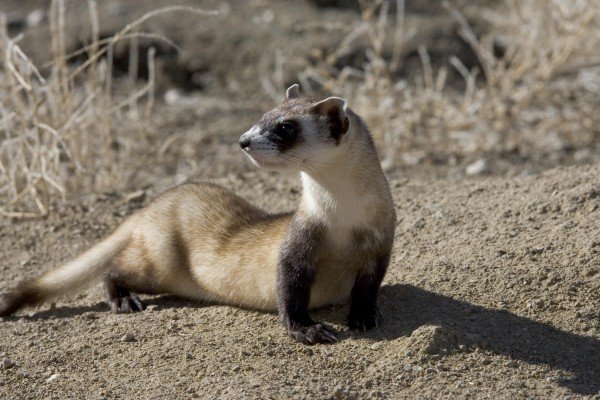Wildlife biologists are turning to aerial drones in an attempt to vaccinate the endangered black-footed ferret in Montana. The drones will reportedly be used to drop sweet treats laced with drugs that will protect the endangered ferrets, according to The Guardian.
The ferret had been considered an endangered species since 1967, Right now, only 300 are thought to be left in the country. The black-footed ferrets along with prairie dogs have fallen victim to the sylvatic plague, a disease delivered through fleas on rats, first detected in the 1800s.
RELATED: Dutch Police Turn to Raptors to Combat Drones
There is a vaccine, and of course individual ferrets can be vaccinated by an injection, but protecting prairie dogs over vast areas has proven challenging. Both species are interconnected so that one is completely co-dependent on the other. The ferrets feast upon prairie dogs and invade their burrows.
Prairie dogs are also considered a “keystone” species because they are important to a number of other animals, such as eagles, owls and coyotes.
To solve the problem, the United States Fish and Wildlife Service has proposed deploying drone aircraft to distribute sweet pellets laced with a vaccine the plague. Officials made their case to use drones because traveling through vast habitats to distribute pesticides to kill the fleas is labor intensive as well as costly.
RELATED: Top 3 Aerial Drones to Get the Perfect Shot
“We dropped the vaccine out of a bag while walking around, but that’s very hard to do over thousands of acres,” Randy Machett, a FWS biologist, told The Guardian. “Spraying burrows with insecticide to kill the fleas is also labor intensive and not a long-term solution. So we are working with private contractors to develop equipment to drop the vaccine uniformly across an area, rather than one hog getting to eat a big pile of them.”
Thanks to drone technology, the species can be targeted and helped. In order to know whether or not the animals are enjoying the pellets, wildlife biologists have built in a dye that stains the animals whiskers. this way, they can count the vaccinated critters.
Photo credit: Wikimedia








